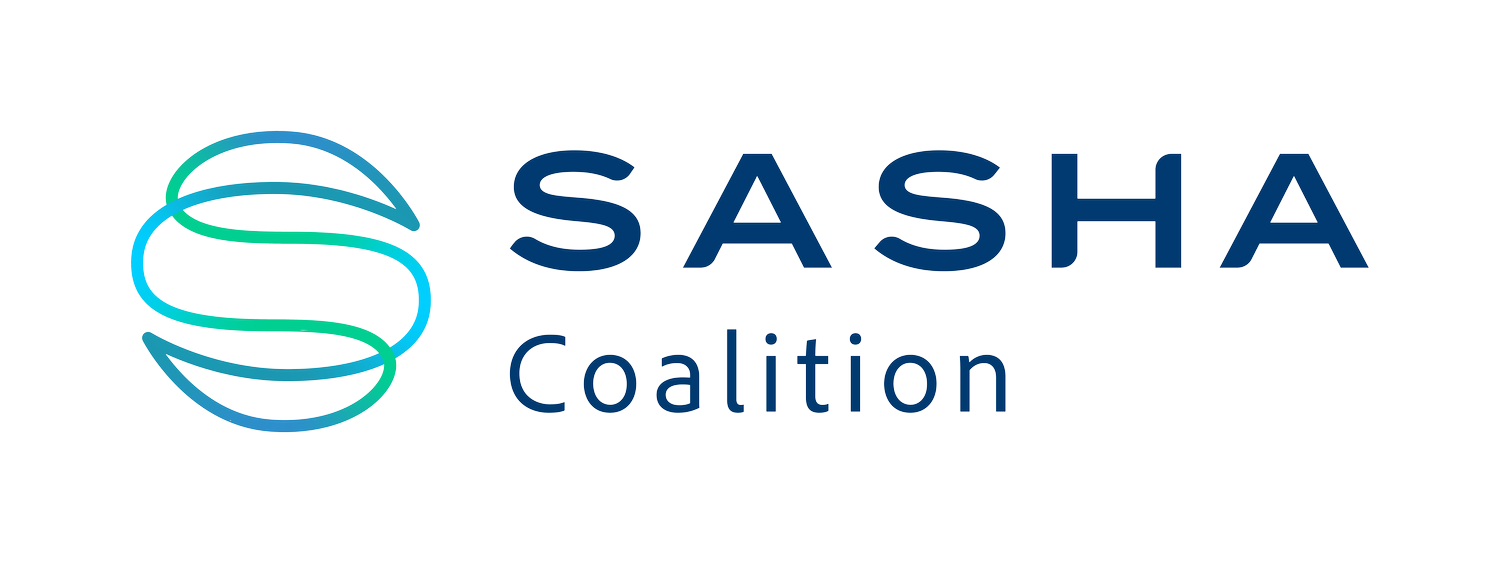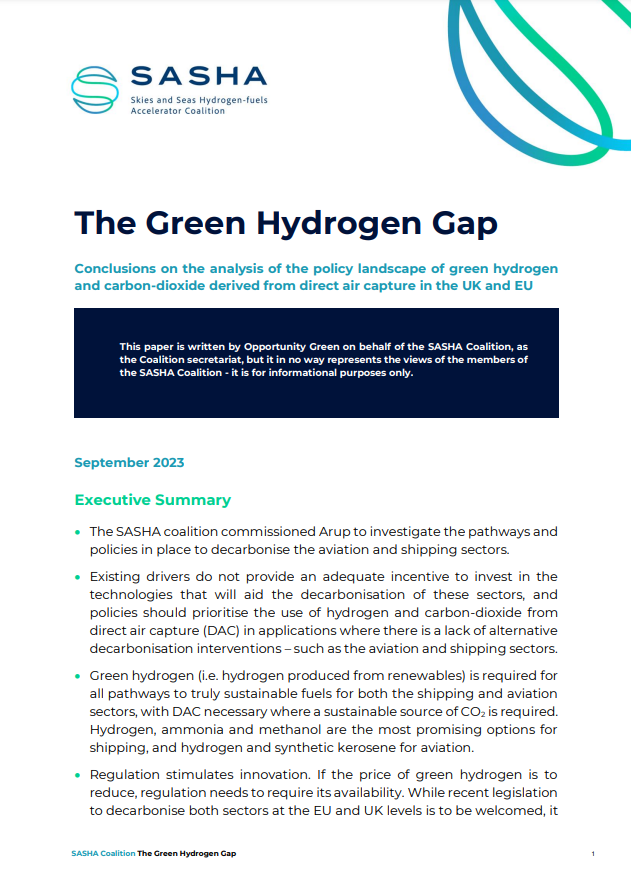
The Green Hydrogen Gap
Policy briefing | September 2023
A report by the SASHA Coalition, with supporting research by Arup
Summary
This report by the SASHA Coalition finds that all pathways to truly sustainable fuels for the shipping and aviation sectors require green hydrogen (produced from renewable energy), and some require carbon dioxide from sustainable sources like direct air capture (DAC).
It reveals that there is a lack of policy supporting the production of green hydrogen, which is slowing down demand and discouraging investment, creating a “Green Hydrogen Gap”.
The report also outlines how governments should prioritise the use of hydrogen and DAC in the aviation and shipping sectors because they lack decent alternatives, and highlights the need for policy to ensure that these solutions can be rolled out at scale.
Policy Recommendations
In light of this research, we recommend that policymakers:
Implement stringent emission reduction targets for aviation and shipping that are aligned with the Paris Agreement goals.
Recognise green hydrogen’s role in decarbonising aviation and shipping.
Introduce targeted mechanisms to incentivise the use of fuels with the greatest potential to reduce full lifecycle emissions over those with less emission reduction potential.
Adopt ambitious mandates for the use of green hydrogen and derived fuels to drive demand, and therefore supply.
Ensure hydrogen is used only in hard-to-electrify sectors, like aviation and shipping, that do not have other options to reach emissions targets.
Adopt a cross-departmental approach to hydrogen policy, ensuring transport stakeholders are involved in decision-making on future uses of green hydrogen and DAC.

